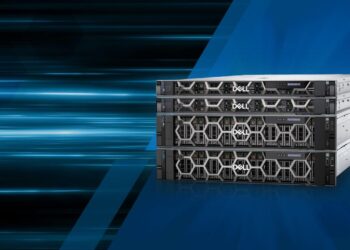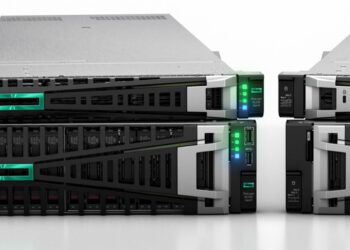The shift to cloud computing has dramatically transformed how businesses operate, offering unprecedented scalability, flexibility, and cost efficiency. At the core of this transformation are cloud servers, the virtual workhorses that host everything from simple websites to complex enterprise applications and vast data lakes. However, as organizations increasingly entrust their critical assets to the cloud, the imperative for robust cloud server security has never been more pronounced. While cloud providers offer a shared responsibility model for security, understanding and implementing best practices for protecting your data and applications in the cloud is paramount. This article delves deep into the multifaceted world of cloud server security, offering insights into best practices, common challenges, and emerging solutions to help you navigate this complex landscape.
The Evolving Cloud Security Landscape

The very nature of cloud environments introduces unique security considerations. Unlike traditional on-premise infrastructures where organizations have full control over physical hardware and network boundaries, cloud servers operate within a shared, virtualized infrastructure managed by a third-party provider (e.g., AWS, Azure, Google Cloud). This shared responsibility model means that while the cloud provider secures the “cloud itself” (the underlying infrastructure, physical security, global network), the customer is responsible for security “in the cloud” (their data, applications, operating systems, network configurations, identity and access management).
This distinction is crucial. Misunderstandings about shared responsibility often lead to security gaps and vulnerabilities. As cyber threats become more sophisticated and data breaches more costly, a proactive and comprehensive approach to cloud server security is no longer an option but a fundamental requirement for business continuity and regulatory compliance.
Key Principles of Cloud Server Security
Securing cloud servers requires a holistic strategy that extends beyond simply deploying security tools. It involves understanding the unique characteristics of cloud environments and adopting principles that address both technical and operational aspects.
A. Shared Responsibility Model Comprehension
As highlighted, this is the bedrock of cloud security. Before migrating to or operating in the cloud, thoroughly understand your chosen cloud provider’s shared responsibility model.
- Cloud Provider’s Responsibility (Security of the Cloud): This typically includes the physical security of data centers, global network infrastructure, virtualization layer, and the underlying hardware. They ensure the foundational infrastructure is secure.
- Customer’s Responsibility (Security in the Cloud): This encompasses what you put into the cloud. This includes:
- Data: Encryption, data classification, access control.
- Applications: Secure coding, patch management, vulnerability testing.
- Operating Systems: OS patching, configuration hardening.
- Network Configuration: Virtual private clouds (VPCs), subnets, firewalls, security groups, network access control lists (ACLs).
- Identity and Access Management (IAM): User authentication, authorization, multi-factor authentication (MFA), least privilege access.
- Client-Side Data: Protecting devices accessing the cloud.
- Platform, Applications, Identity & Directory Infrastructure: This includes the configuration of services like databases, serverless functions, and storage buckets.
A clear understanding prevents assumptions that your cloud provider handles all security aspects, leading to critical misconfigurations or unprotected data.
B. Robust Identity and Access Management (IAM)
IAM is arguably the most critical component of cloud server security. Weak IAM practices are a primary cause of cloud breaches.
- Principle of Least Privilege (PoLP): Grant users and services only the minimum permissions necessary to perform their tasks. Avoid granting broad administrative access. Regularly review and revoke unnecessary permissions.
- Multi-Factor Authentication (MFA): Implement MFA for all user accounts, especially for administrative roles. This adds an extra layer of security beyond just a password, making it significantly harder for unauthorized users to gain access.
- Strong Password Policies: Enforce complex password requirements and encourage regular password changes.
- Role-Based Access Control (RBAC): Define roles with specific permissions and assign users to those roles. This simplifies permission management and reduces the risk of misconfigurations.
- Federated Identity: Integrate your on-premise identity provider with your cloud environment for seamless and secure access management, simplifying user provisioning and de-provisioning.
- Regular Access Reviews: Periodically audit who has access to what, ensuring that permissions remain appropriate and that accounts of departed employees or contractors are promptly de-provisioned.
C. Network Security Controls
Even in the cloud, network segmentation and access control are vital.
- Virtual Private Clouds (VPCs) / Virtual Networks (VNets): Create isolated network environments within the public cloud. This provides a logical boundary for your resources, separating them from other tenants.
- Security Groups and Network ACLs: Configure granular inbound and outbound rules for your cloud servers. Allow only necessary traffic to specific ports and IP ranges. Restrict all other access. For example, open SSH/RDP ports only to specific management IPs.
- Network Segmentation: Segment your cloud network into different subnets (e.g., web tier, application tier, database tier) and apply strict security controls between them. This limits lateral movement for attackers if one segment is compromised.
- Cloud Firewalls: Leverage cloud-native firewall services or third-party virtual firewalls for advanced traffic filtering, intrusion detection, and prevention.
- DDoS Protection: Utilize cloud provider’s DDoS (Distributed Denial of Service) protection services to mitigate large-scale attacks that could overwhelm your servers.
- VPC Flow Logs: Enable and regularly monitor flow logs to gain visibility into network traffic patterns, helping identify suspicious activities or misconfigurations.
D. Data Encryption in Transit and at Rest
Data protection is non-negotiable. Encryption provides a critical layer of defense.
- Encryption at Rest: Encrypt data stored on cloud servers (e.g., EBS volumes, S3 buckets, relational databases). Cloud providers offer managed encryption services, often integrated with Key Management Services (KMS). Use customer-managed keys (CMK) when higher control is required.
- Encryption in Transit: Encrypt data as it moves between your users and cloud servers, or between different cloud services. Use TLS/SSL for web traffic, VPNs for secure connectivity to your VPCs, and secure protocols for inter-service communication.
- Key Management: Securely manage encryption keys. Cloud Key Management Services (KMS) provide a centralized, secure way to create, store, and manage cryptographic keys, often integrated with hardware security modules (HSMs).
E. Regular Patching and Configuration Management
Even with cloud abstraction, operating systems and applications running on cloud servers require constant vigilance.
- Automated Patch Management: Implement automated processes for applying security patches to operating systems, libraries, and applications running on your cloud servers. This reduces the window of vulnerability.
- Configuration Hardening: Follow security benchmarks (e.g., CIS Benchmarks) to harden the configuration of your cloud server operating systems (Linux, Windows Server). Disable unnecessary services, remove default accounts, and enforce strong settings.
- Infrastructure as Code (IaC) with Security: Use IaC tools (e.g., Terraform, CloudFormation, Ansible) to define and manage your cloud infrastructure. This ensures consistent, repeatable, and secure deployments by embedding security best practices directly into your code templates. Version control your IaC templates to track changes and roll back if necessary.
- Configuration Drift Detection: Tools can monitor your cloud server configurations and alert you to any unauthorized changes or deviations from your desired secure state.
F. Logging, Monitoring, and Auditing
Visibility is crucial for detecting and responding to security incidents.
- Centralized Logging: Aggregate logs from all your cloud servers, cloud services, network devices, and applications into a centralized logging solution (e.g., cloud-native logging services, Splunk, ELK stack).
- Real-time Monitoring and Alerting: Implement real-time monitoring of security events and performance metrics. Set up alerts for suspicious activities, unauthorized access attempts, configuration changes, or resource depletion that could indicate an attack.
- Cloud Security Posture Management (CSPM): Utilize CSPM tools to continuously monitor your cloud environment for misconfigurations, compliance deviations, and security risks. These tools provide a holistic view of your security posture.
- Security Information and Event Management (SIEM): Integrate cloud logs with a SIEM system for advanced threat detection, correlation of events, and incident response orchestration.
- Regular Audits and Compliance Checks: Conduct periodic security audits and compliance checks to ensure your cloud server environment adheres to relevant industry standards (e.g., PCI DSS, HIPAA, GDPR, ISO 27001) and internal security policies.
G. Incident Response Planning
Despite all preventative measures, breaches can occur. A well-defined incident response plan is essential.
- Preparation: Develop a comprehensive incident response plan specifically for your cloud environment. This includes defining roles and responsibilities, communication protocols, and escalation procedures.
- Detection and Analysis: Establish clear procedures for detecting security incidents, analyzing their scope and impact, and identifying the root cause.
- Containment: Implement strategies to limit the damage of an incident, such as isolating compromised servers or segmenting affected networks.
- Eradication: Remediate the vulnerabilities that led to the incident and remove any malicious components.
- Recovery: Restore affected systems and data from secure backups.
- Post-Incident Review: Conduct a thorough post-mortem analysis to identify lessons learned and improve future security measures.
- Regular Drills: Conduct regular incident response drills and tabletop exercises to ensure your team is prepared to respond effectively under pressure.
H. Data Backup and Disaster Recovery
While not strictly security, robust backup and disaster recovery (DR) strategies are critical for business continuity in the face of security incidents, natural disasters, or technical failures.
- Automated Backups: Implement automated, regular backups of your critical data and server configurations.
- Offsite Storage: Store backups in a separate geographical region or even a different cloud provider to mitigate regional outages.
- Immutable Backups: Utilize immutable backup features where possible, preventing ransomware or malicious actors from altering or deleting your backups.
- Disaster Recovery Plan: Develop and regularly test a disaster recovery plan that outlines how to restore your cloud servers and applications in the event of a major outage or data loss. This includes defining recovery time objectives (RTO) and recovery point objectives (RPO).
- Versioning: Maintain multiple versions of your data backups, allowing you to restore to a point in time before a compromise occurred.
Advanced Cloud Server Security Measures

Beyond the foundational principles, several advanced measures can significantly enhance cloud server security.
I. Cloud Security Posture Management (CSPM) and Cloud Workload Protection Platforms (CWPP)
These categories of tools are becoming indispensable for modern cloud security:
- CSPM: Focuses on continuous monitoring of your cloud configuration against security best practices and compliance standards. It identifies misconfigurations, overly permissive access, and deviations from security policies across your cloud accounts and services.
- CWPP: Concentrates on protecting individual cloud workloads (virtual machines, containers, serverless functions) from threats. This includes vulnerability management, runtime protection, host intrusion detection, and application control. Many CWPP solutions integrate with CSPM for a more unified view.
J. Zero Trust Architecture (ZTA)
Zero Trust is a security model that assumes no user, device, or application, inside or outside the network, should be trusted by default. Every access request is authenticated, authorized, and continuously validated.
- Never Trust, Always Verify: Every attempt to access a resource is verified.
- Micro-segmentation: Break down networks into small, isolated segments, limiting lateral movement.
- Device Trust: Verify the security posture of every device attempting access.
- Continuous Monitoring: Continuously monitor and analyze user and device behavior for anomalies.
- Least Privilege Access: Grant only necessary access for the shortest possible time.
Implementing ZTA in cloud environments enhances server security by preventing unauthorized access and limiting the blast radius of a breach.
K. Security Chaos Engineering
Inspired by Netflix’s Chaos Engineering, this involves intentionally injecting failures and security weaknesses into your cloud server environment in a controlled manner to identify vulnerabilities and test the resilience of your security controls and incident response plan. By proactively breaking things, you learn how to fix them before a real attack.
L. Container Security and Serverless Security
As organizations adopt containers (e.g., Docker, Kubernetes) and serverless functions (e.g., AWS Lambda, Azure Functions), specific security considerations arise:
- Container Security:
- Image Scanning: Scan container images for vulnerabilities and malicious code before deployment.
- Runtime Protection: Monitor container behavior during runtime for suspicious activities.
- Orchestration Security: Secure your Kubernetes clusters by hardening the API server, implementing network policies, and managing secrets securely.
- Least Privilege for Containers: Ensure containers run with the minimum necessary privileges.
- Serverless Security:
- Input Validation: Validate all inputs to serverless functions to prevent injection attacks.
- Least Privilege for Functions: Grant serverless functions only the permissions they absolutely need.
- Dependency Management: Regularly update and scan third-party libraries used in your functions for vulnerabilities.
- API Gateway Security: Secure the API gateways that expose your serverless functions with authentication, authorization, and rate limiting.
Challenges in Cloud Server Security
Despite the advancements, cloud server security presents its own set of hurdles:
- Complexity and Visibility: Cloud environments can be incredibly complex, with numerous services, configurations, and integrations. Gaining comprehensive visibility across all assets and understanding their security posture can be challenging.
- Skills Gap: A shortage of cybersecurity professionals with cloud-specific expertise can hinder effective implementation and management of cloud security measures.
- Shadow IT: Unauthorized cloud service adoption by departments or employees can create unmanaged security risks.
- Vendor Lock-in and Multi-Cloud Security: Managing security across multiple cloud providers can be complex, requiring different tools and skill sets, potentially leading to inconsistent security postures.
- Compliance and Regulatory Demands: Meeting various industry-specific and regional compliance requirements (e.g., GDPR, HIPAA, PCI DSS) in a dynamic cloud environment adds significant overhead.
- Data Residency and Sovereignty: For global organizations, ensuring data stays within specific geographical boundaries to comply with local laws can be a complex security and architectural challenge.
- Evolving Threat Landscape: Cybercriminals are continuously developing new techniques to target cloud environments, requiring constant adaptation and vigilance.
The Path Forward
Securing cloud servers is not a one-time project; it’s an ongoing journey that requires continuous effort, adaptation, and a strong security culture.
- Security by Design: Integrate security considerations into every stage of your cloud adoption journey, from initial architecture to deployment and ongoing operations. Don’t treat security as an afterthought.
- Automation: Leverage automation extensively for security tasks, including configuration, patching, monitoring, and incident response. This reduces manual errors and improves efficiency.
- Continuous Education: Regularly train your IT and development teams on cloud security best practices, emerging threats, and new tools.
- Collaboration: Foster strong collaboration between security, development (DevSecOps), and operations teams to embed security into the entire software development lifecycle.
- Proactive Threat Hunting: Move beyond reactive security and proactively hunt for threats within your cloud environment.
- Security Audits and Penetration Testing: Regularly conduct external security audits and penetration tests of your cloud-based applications and infrastructure to identify vulnerabilities.
Conclusion
Cloud servers are the engines of the modern digital economy, and their security is paramount. By thoroughly understanding the shared responsibility model, implementing robust IAM, strong network security controls, comprehensive data encryption, and proactive patching and monitoring, organizations can significantly mitigate risks. Embracing advanced strategies like CSPM, CWPP, and Zero Trust, along with a strong incident response plan, further strengthens defenses. While challenges persist, a committed, proactive, and continuously evolving approach to cloud server security is essential for harnessing the full potential of cloud computing while safeguarding your most valuable digital assets. The future of business depends on securing this dynamic and increasingly vital digital frontier.









